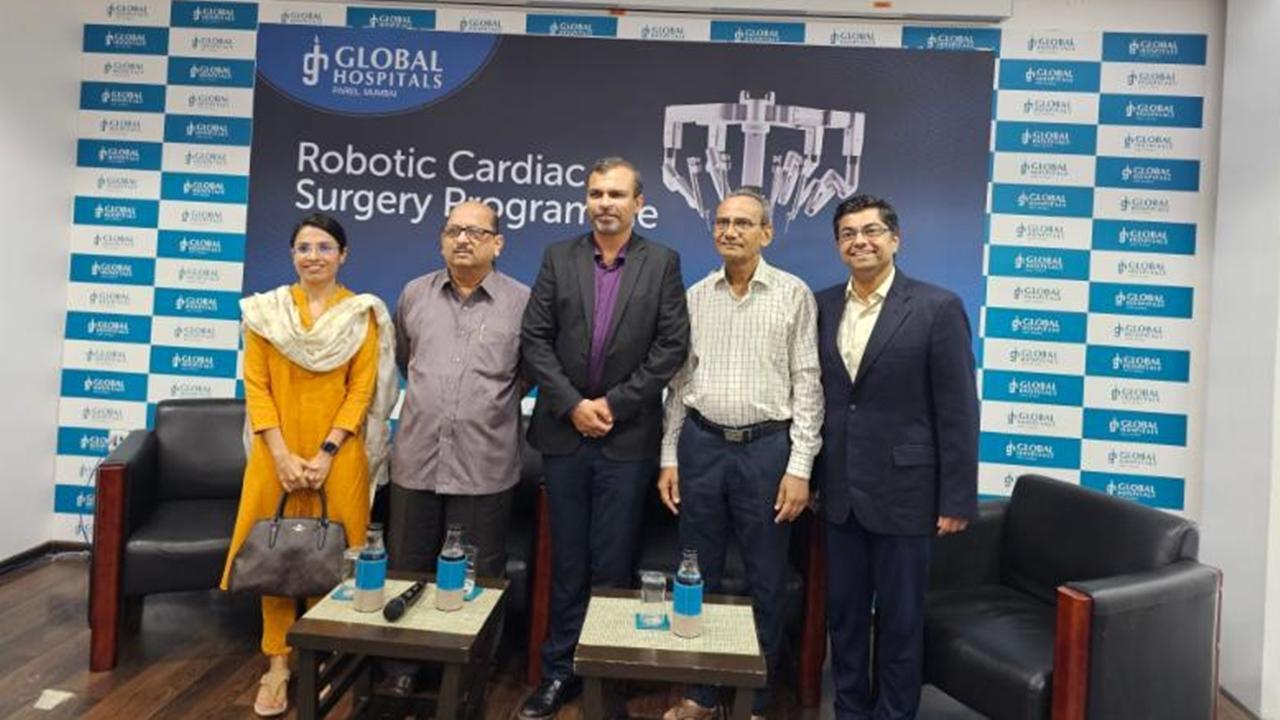After consuming medications as per the doctor's advice and experiencing no relief from his condition, Saha, a resident of Kalyan, opted to have an angiography performed at the nearest diagnostic center

Dr Chandrashekhar (centre) with K Saha, the first patient to undergo the surgery on his left, and Harshad Shah, the second patient to undergo the surgery on his right.
"For the last two years, I have been suffering from breathing problems. I visited multiple doctors, but many of them said that I was suffering from acidity," said 61-year-old K. Saha, who was the first patient to undergo robotic-assisted bypass surgery at Parel's Global Hospital in May.
ADVERTISEMENT
After consuming medications as per the doctor's advice and experiencing no relief from his condition, Saha, a resident of Kalyan, opted to have an angiography performed at the nearest diagnostic center. "There were four blockages detected, and I was told that it is critical," Saha said.
The center recommended him to visit a doctor at Global Hospital. "As a diabetic patient, there was no other option but a bypass surgery," he said.
The doctors explained different types of surgeries he could opt for and advised him to choose the robotic one as he was overweight and had comorbidities. The procedure, as well as his week-long stay at the hospital post-surgery, cost him a little over Rs 7 lakh. His insurance covered a substantial part.
"I had to rely on my family members for the additional amount, but the post-surgery comfort outweighed the cost. The healing time for open-heart surgery is about six months, and considering my pre-existing condition, it would have prolonged the healing process," Saha said.
Saha had also considered undergoing surgery at King Edward Memorial Hospital (KEM), but he said at the time the hospital lacked facilities for minimally invasive surgery. "Neither did they have the option for robotic surgery, and open-heart was out of the question," he said.
After one month of rest, Saha, who works with a third-party inspection agency in Saki Naka, is now ready to return to work starting this Monday.
Dr Chandrashekhar Kulkarni, the lead heart transplant surgeon at Global, explained that medical professionals take two things into consideration before the surgery: First, how to reduce collateral damage and pain, and second, how to enhance the recovery process.
"In traditional surgeries, the bypass is performed by making a large incision in the center of the chest and cutting open the sternum bone. During the surgery, the bone is fixed back together using steel wires, which remain inside the patient permanently after the heart operation," he explained.
The injury in the bone takes about six to eight weeks to heal and may take even longer in patients with pre-existing comorbidities. "Robotic-assisted bypass surgeries can be performed without cutting open the bone," Dr Kulkarni said.
The main difference between minimally invasive surgery and this is that not every patient can opt for it because it depends upon the size of the chest and the strength of the bone, he said. "Minimally invasive cardiac surgeries are a pick-and-choose approach. I'll see a patient and decide if they are fit to undergo it."
This filters out a large number of patients, but that is not the same with robotic surgery. The machine used at Global is called Da Vinci Xi, and surgeons are trained for six months before performing surgery with it on patients.
"The robot comes with a set of instruments and mimics the micro-movements of our hands. It was easy for me to transition from a normal surgery to robotic surgery," Dr Kulkarni said.
The hospital performed the second such surgery on June 20th. The first-ever robot-assisted cardiac surgery in Mumbai was performed at Saifee Hospital on a 64-year-old patient.
 Subscribe today by clicking the link and stay updated with the latest news!" Click here!
Subscribe today by clicking the link and stay updated with the latest news!" Click here!








